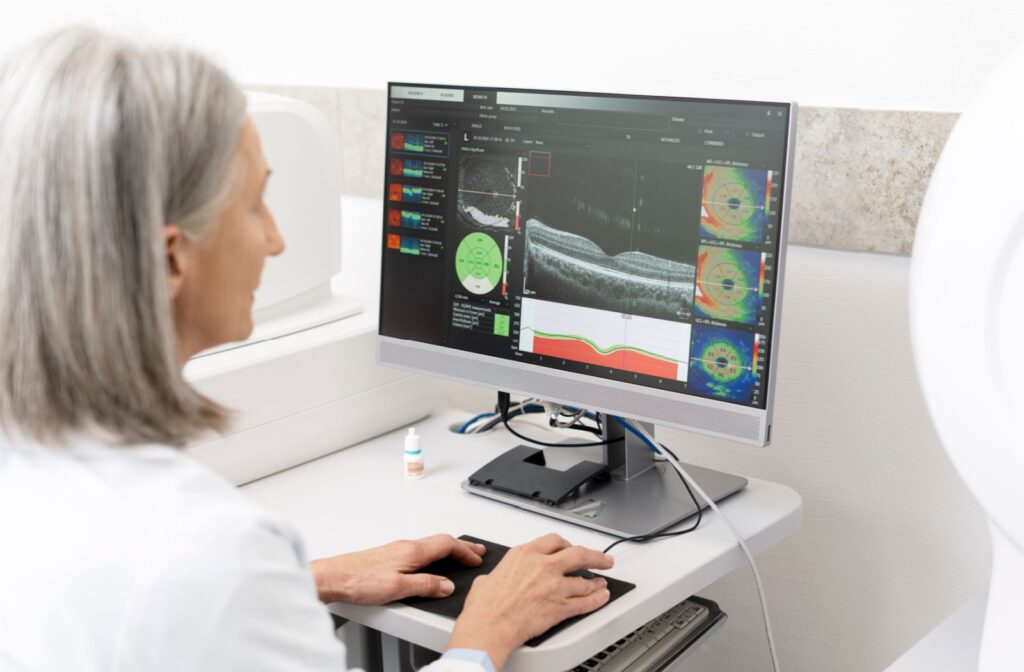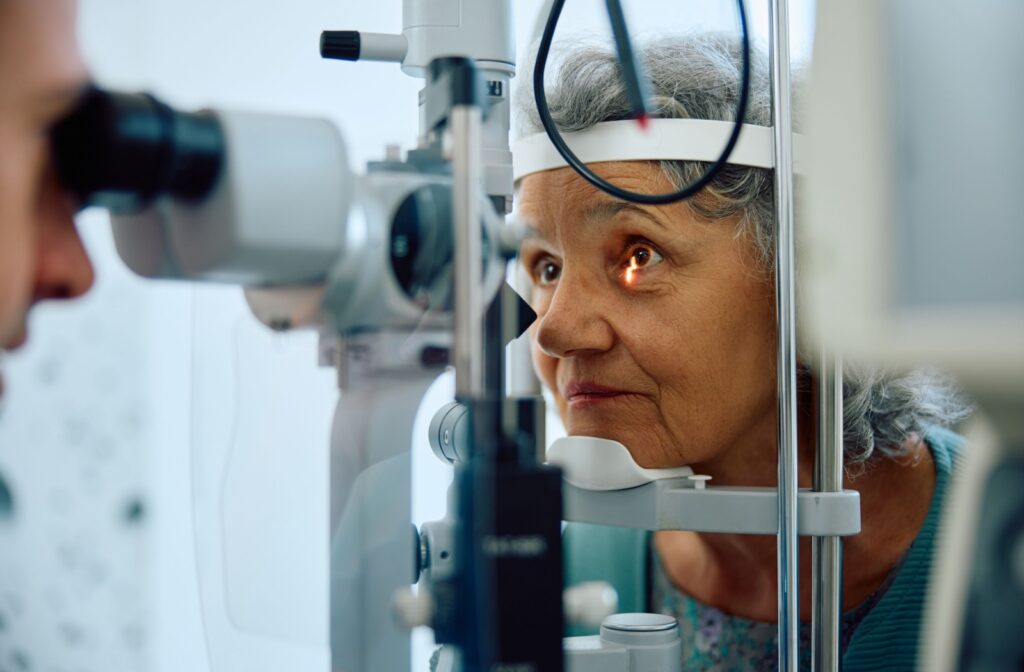Living with diabetes can pose numerous challenges, but the possibility of vision loss is one of the most concerning. Maintaining clear, healthy vision is essential for everyday activities, from work to family life. When conditions like diabetic retinopathy arise, it’s natural to wonder whether they can be reversed and how concerned you should be.
The truth is, diabetic retinopathy cannot be completely reversed. However, with early detection and proper treatment, its progression can be slowed, and in some cases, further damage to vision can be prevented. Diabetes doesn’t have to define your vision, and your optometrist can help you address this all too common condition.
What Is Diabetic Retinopathy?
Diabetic retinopathy is a diabetes-related eye condition that arises due to high blood sugar levels. Over time, these elevated levels damage the tiny, delicate blood vessels in the retina at the back of the eye, which is responsible for capturing light and converting it into signals your brain interprets as vision.
When these blood vessels become damaged, they may thicken, narrow, or leak fluids. This disrupts blood flow to the retina and, if untreated, can worsen into proliferative diabetic retinopathy (PDR).
At this advanced stage, abnormal new blood vessels grow to compensate for reduced blood flow. Unfortunately, these new vessels are fragile and may rupture, causing scarring or even retinal detachment, potentially leading to permanent vision loss.
Warning Signs to Know
Diabetic retinopathy is especially tricky because it often starts without noticeable symptoms. But as it progresses, you may experience issues such as:
- Blurry or fluctuating vision
- Dark or empty spots in your vision
- A reduced ability to perceive colours
- A rise in the number of floaters
- Partial or complete vision loss in more advanced cases
For anyone with diabetes, regular eye exams are crucial. Early detection can identify warning signs even before symptoms emerge, helping to protect your eyesight.
How Optometrists Diagnose Diabetic Retinopathy
Effective eye care starts with a thorough diagnosis. Optometrists use a range of precise diagnostic tools so we don’t miss anything during your diabetic eye exam. These include:
- Visual acuity testing to measure vision clarity
- Tonometry to assess eye pressure levels
- Pupil dilation to provide a closer look at the retina and optic nerve
- Retinal imaging and photography to detect micro-aneurysms or small blood vessel leaks
- Optical coherence tomography (OCT) for detailed imaging of the retina
With these tools, your optometrist can identify diabetic retinopathy at its earliest stages, allowing timely treatment and giving you a chance to preserve your vision.

Effective Treatments for Diabetic Retinopathy
Although we can’t reverse damage already caused by diabetic retinopathy, several treatments can help protect and preserve your vision. The goal is to address the root causes of the condition, slow its progression, and manage symptoms.
Manage Blood Sugar to Protect Vision
The most effective way to combat diabetic retinopathy is by keeping your blood sugar levels in check. A balanced diet, regular exercise, and prescribed medications can prevent further damage to your eyes and reduce complications.
Consistent diabetes management is the foundation of protecting your overall health and vision.
Medications for Better Vision
In some cases, medications can help address the symptoms of diabetic retinopathy. Injected directly into the eye, these treatments include:
- Anti-VEGF medication: Medicines like ranibizumab or aflibercept can help limit abnormal blood vessel growth and reduce swelling in the retina
- Steroid injections: Eye doctors can manage advanced diabetic retinopathy with intravitreal steroids to combat inflammation
These approaches target the specific challenges posed by diabetic retinopathy to stabilize and improve your symptoms.
Laser Therapy for Advanced Cases
Laser therapy (also called photocoagulation) is a noninvasive procedure used to seal leaking blood vessels and prevent new ones from forming. It’s an outpatient procedure, so you won’t have to stay in a hospital overnight.
This method is particularly effective in advanced stages of diabetic retinopathy, helping to prevent further complications and vision loss.
Surgical Options to Restore Stability
For severe cases, surgery may be the most effective treatment option. A procedure called vitrectomy involves carefully removing gel-like fluid, blood, or scar tissue to ease pressure on the retina. By addressing these issues, surgery can help stabilize vision and reduce the risk of permanent damage.
Why Early Detection Is Key
The unfortunate truth is that more than 50% of people with diabetes develop some form of diabetic retinopathy. The good news is that early detection and treatment significantly improve the chances of preserving your eyesight.
By managing your diabetes and committing to regular eye exams—even before symptoms appear—you can uncover and address diabetic retinopathy early.
Take Control of Your Vision Today
Your vision is vital to your quality of life, and there’s so much you can do to protect it. Timely eye exams, proactive diabetes management, and effective treatments all play a role in supporting lasting eye health.
Discover Eyecare is here to help you every step of the way. Whether you need help diagnosing diabetic retinopathy or exploring treatment options, our dedicated team is ready to work with you to create a personalized plan.
Schedule your appointment with us today and take the first step toward healthier vision!



